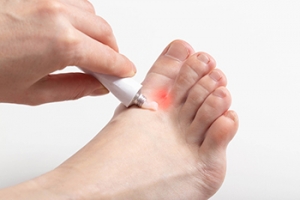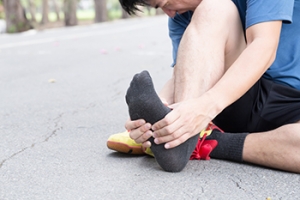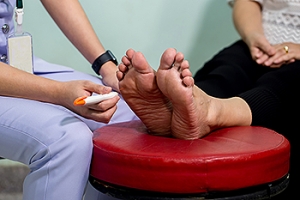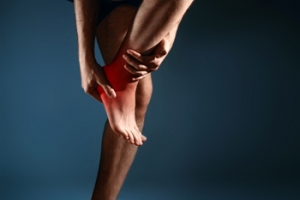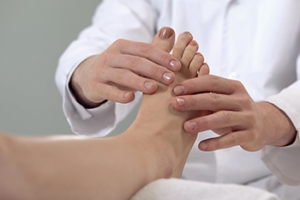Connect With Us
Featured Articles
Super User
Effective Prevention Techniques for Athlete’s Foot

Athlete’s foot is a foot condition that can be uncomfortable and unsightly. It is caused by a fungus that lives in warm environments such as public swimming pools, shower room floors, and locker rooms. The symptoms that often accompany this can include itchiness between the toes and on the bottom of the foot, and the skin can be white and soggy. Some people have cracked skin with this ailment, in addition to small blisters. Patients who have a weakened immune system may be prone to getting athlete’s foot, in addition to having poor foot hygiene. Some people have learned to avoid athlete’s foot by wearing appropriate shoes while in public places, and refraining from sharing towels, shoes, and socks. It may help to use foot powder inside the shoes, which may aid in prevention. If you have this foot condition, it is strongly suggested that you are under the care of a podiatrist who can prescribe medication for complete healing.
Athlete’s foot is an inconvenient condition that can be easily reduced with the proper treatment. If you have any concerns about your feet and ankles, contact Dr. Thong V. Truong from California. Our doctor will treat your foot and ankle needs.
Athlete’s Foot: The Sole Story
Athlete's foot, also known as tinea pedis, can be an extremely contagious foot infection. It is commonly contracted in public changing areas and bathrooms, dormitory style living quarters, around locker rooms and public swimming pools, or anywhere your feet often come into contact with other people.
Solutions to Combat Athlete’s Foot
- Hydrate your feet by using lotion
- Exfoliate
- Buff off nails
- Use of anti-fungal products
- Examine your feet and visit your doctor if any suspicious blisters or cuts develop
Athlete’s foot can cause many irritating symptoms such as dry and flaking skin, itching, and redness. Some more severe symptoms can include bleeding and cracked skin, intense itching and burning, and even pain when walking. In the worst cases, Athlete’s foot can cause blistering as well. Speak to your podiatrist for a better understanding of the different causes of Athlete’s foot, as well as help in determining which treatment options are best for you.
If you have any questions please feel free to contact our office located in Chico, CA . We offer the newest diagnostic and treatment technologies for all your foot and ankle needs.
Cracked Heels and Socks
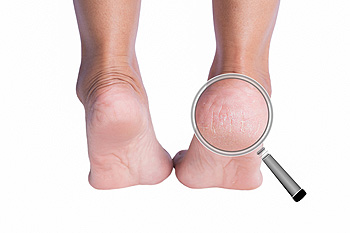
Although many cases of cracked heels are not necessarily severe and painful, the condition can nonetheless be an annoyance and potentially uncomfortable. The condition is defined as a lack of moisture on the back of the heels that causes the skin to crack and fissure. There are many ways in which cracked heels might be prevented. Socks might play an important role in achieving this end. For example, to prevent the heels from becoming dry, an individual could generously apply moisturizer to the feet at night before bed and put on a pair of socks. The socks can essentially lock in the moisturizer and help improve the extent to which the moisturizer is absorbed by the feet. If you are worried about cracked heels and want to learn more preventative methods, contact a podiatrist today. This foot specialist can help you address any problems you might have.
Cracked heels are unsightly and can cause further damage to your shoes and feet. If you have any concerns, contact Dr. Thong V. Truong from California. Our doctor can provide the care you need to keep you pain-free and on your feet.
Cracked Heels
Cracked heels appear unappealing and can make it harder for you walk around in sandals. Aside from looking unpleasant, cracked heels can also tear stockings, socks, and wear out your shoes. There are several methods to help restore a cracked heel and prevent further damage.
How Do You Get Them?
Dry skin is the number one culprit in creating cracked heels. Many athletes, walkers, joggers, and even swimmers suffer from cracked heels. Age and skin oil production play a role to getting cracked heels as well.
Promote Healing
Over the counter medicines can help, especially for those that need instant relief or who suffer from chronic dry feet.
Wear Socks – Wearing socks with medicated creams helps lock in moisture.
Moisturizers – Applying both day and night will help alleviate dryness which causes cracking.
Pumice Stones – These exfoliate and remove dead skin, which allows for smoother moisturizer application and better absorption into the skin.
Change in Diet
Eating healthy with a well-balanced diet will give the skin a fresh and radiant look. Your body responds to the kinds of food you ingest. Omega-3 fatty acids and zinc supplements can also revitalize skin tissue.
Most importantly, seek professional help if unsure how to proceed in treating cracked heels. A podiatrist will help you with any questions or information needed.
If you have any questions, please feel free to contact our office located in Chico, CA . We offer the newest diagnostic and treatment technologies for all your foot care needs.
Dealing With Plantar Fasciitis
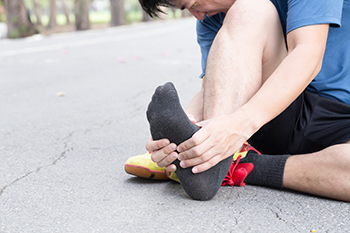
Plantar fasciitis is an inflammation of the thick band of tissue that runs from the toes to the heel under the foot. Known as the plantar fascia, this tissue is more likely to become damaged if you are middle-aged, overweight, or have a job that requires you to be on your feet for long periods. Plantar fasciitis is the most common cause of heel pain. It occurs mainly from overuse and is especially common among runners and other athletes that continually pound their feet on hard surfaces. Many people can reduce or even eliminate the effects of plantar fasciitis by resting, icing, and massaging the feet for 20 minutes a day. Other tips include wearing shoes with ample cushioning in the heel and arch support. A number of simple exercises can prove helpful in reducing the pain from plantar fasciitis. If these simple measures don’t work, please consult a podiatrist for a diagnosis and options for more advanced treatment.
Plantar fasciitis is a common foot condition that is often caused by a strain injury. If you are experiencing heel pain or symptoms of plantar fasciitis, contact Dr. Thong V. Truong from California. Our doctor can provide the care you need to keep you pain-free and on your feet.
What Is Plantar Fasciitis?
Plantar fasciitis is one of the most common causes of heel pain. The plantar fascia is a ligament that connects your heel to the front of your foot. When this ligament becomes inflamed, plantar fasciitis is the result. If you have plantar fasciitis you will have a stabbing pain that usually occurs with your first steps in the morning. As the day progresses and you walk around more, this pain will start to disappear, but it will return after long periods of standing or sitting.
What Causes Plantar Fasciitis?
- Excessive running
- Having high arches in your feet
- Other foot issues such as flat feet
- Pregnancy (due to the sudden weight gain)
- Being on your feet very often
There are some risk factors that may make you more likely to develop plantar fasciitis compared to others. The condition most commonly affects adults between the ages of 40 and 60. It also tends to affect people who are obese because the extra pounds result in extra stress being placed on the plantar fascia.
Prevention
- Take good care of your feet – Wear shoes that have good arch support and heel cushioning.
- Maintain a healthy weight
- If you are a runner, alternate running with other sports that won’t cause heel pain
There are a variety of treatment options available for plantar fasciitis along with the pain that accompanies it. Additionally, physical therapy is a very important component in the treatment process. It is important that you meet with your podiatrist to determine which treatment option is best for you.
If you have any questions, please feel free to contact our office located in Chico, CA . We offer the newest diagnostic and treatment technologies for all your foot care needs.
Healing Time for a Broken Ankle

Common ways an ankle can be broken include twisting the ankle beyond its limit or enduring a foot injury. There are noticeable symptoms that accompany a broken ankle. Many people are unable to walk with this type of injury, and there is often immediate pain felt and bruising. In severe breaks, a bone may become displaced where it can look deformed. If a broken ankle is suspected, a proper diagnosis is needed. Generally, this includes having an X-ray taken. Treatment can begin with placing the affected foot in a protective cast or boot, which is a successful method that helps the patient keep weight off the foot. A broken ankle can take up to approximately 12 weeks to completely heal, at which time full range of motion is often restored. A displaced ankle bone may require surgery that can help to put the bone back into its normal position and with this, a longer recovery time may be needed. If you have fractured your ankle, it is advised that you consult a podiatrist who can guide you toward the treatment that is best for you.
Broken ankles need immediate treatment. If you are seeking treatment, contact Dr. Thong V. Truong from California. Our doctor can provide the care you need to keep you pain-free and on your feet.
Broken Ankles
A broken ankle is experienced when a person fractures their tibia or fibula in the lower leg and ankle area. Both of these bones are attached at the bottom of the leg and combine to form what we know to be our ankle.
When a physician is referring to a break of the ankle, he or she is usually referring to a break in the area where the tibia and fibula are joined to create our ankle joint. Ankles are more prone to fractures because the ankle is an area that suffers a lot of pressure and stress. There are some obvious signs when a person experiences a fractured ankle, and the following symptoms may be present.
Symptoms of a Fractured Ankle
- Excessive pain when the area is touched or when any pressure is placed on the ankle
- Swelling around the area
- Bruising of the area
- Area appears to be deformed
If you suspect an ankle fracture, it is recommended to seek treatment as soon as possible. The sooner you have your podiatrist diagnose the fracture, the quicker you’ll be on the way towards recovery.
If you have any questions, please feel free to contact our office located in Chico, CA . We offer the newest diagnostic and treatment technologies for all your foot care needs.
All About Broken Ankle
Broken ankles or “ankle fractures” are injuries that occur when the bones that make up the ankle joint are broken. Ankle injuries are some of the most common bone and joint injuries. The ankle joint is made up of three bones that join. The tibia is the main bone, and it makes up the inside of the anklebone. The fibula is a smaller bone, and it makes up the outside of the anklebone. A membrane called the joint capsule is lined with a layer called the synovium, which covers the entire joint. The synovium produces synovial fluid which allows for the joint surfaces to move.
An ankle becomes broken when the joint is stressed beyond the strength of its limits. When an ankle is fractured, ligaments may also tear at the same time. Fractures often occur to the ankle rolling or twisting in an unusual way. At times, a fracture may even be caused by an extreme force applied to the joint.
Symptoms of a broken ankle include pain, swelling, bruising, discoloration, numbness, and an inability to move the toes. If you have a broken ankle, you may also hear something tear or snap when you initially suffered the injury. If you have pain from a broken ankle, beware that the pain will not always come from the exact area of the fracture; you may also experience pain from associated foot fractures. The swelling you may experience can suggest that soft tissue damage may have occurred due to the injury.
There are differences between an ankle fracture and an ankle sprain. The difference is that a fracture or break in the bone is required to classify an injury as a broken ankle. An ankle sprain occurs when there is a tear or disruption of ligaments in the ankle. In some cases, the prognosis of an ankle sprain may be worse than that of a fracture.
X-rays are the most common way to diagnose a broken ankle. X-rays show if the ankle is broken and where exactly the fracture is located. It will also show how many pieces of broken bone there are. A second method of testing to see if an ankle is broken is a stress test. To do this, the doctor will put pressure on the ankle and perform a stress test to determine if the fracture requires surgery. Other methods for diagnosis include CT scans and MRI scans.
If you are suffering from a broken ankle, consult with your podiatrist immediately to receive a proper diagnosis and treatment.
Foot Care Is Essential for Diabetic Patients
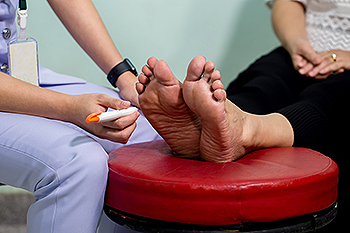
Practicing good foot care is essential for most people, and it is especially imperative for diabetic patients. Neuropathy can affect people who are diabetic. This is a condition that causes the inability to feel existing cuts, bruises, and scrapes on the feet. If these cuts do not get immediate medical attention, infection may occur, which may lead to gangrene, and possible amputation. Foot care can begin with washing and drying the feet thoroughly, followed by applying a gentle moisturizer. It is beneficial to have the toenails trimmed weekly, in addition to refraining from walking barefoot. Many diabetic patients appreciate the benefits of engaging in a gentle exercise regime, which may help to improve circulation. The importance of wearing shoes that are comfortable and fit correctly cannot be impressed upon enough to restore and maintain proper foot health. If you have diabetes, it is strongly advised that you are under the care of a podiatrist who can treat and help you to manage this condition.
Diabetic foot care is important in preventing foot ailments such as ulcers. If you are suffering from diabetes or have any other concerns about your feet, contact Dr. Thong V. Truong from California. Our doctor can provide the care you need to keep you pain-free and on your feet.
Diabetic Foot Care
Diabetes affects millions of people every year. The condition can damage blood vessels in many parts of the body, especially the feet. Because of this, taking care of your feet is essential if you have diabetes, and having a podiatrist help monitor your foot health is highly recommended.
The Importance of Caring for Your Feet
- Routinely inspect your feet for bruises or sores.
- Wear socks that fit your feet comfortably.
- Wear comfortable shoes that provide adequate support.
Patients with diabetes should have their doctor monitor their blood levels, as blood sugar levels play such a huge role in diabetic care. Monitoring these levels on a regular basis is highly advised.
It is always best to inform your healthcare professional of any concerns you may have regarding your feet, especially for diabetic patients. Early treatment and routine foot examinations are keys to maintaining proper health, especially because severe complications can arise if proper treatment is not applied.
If you have any questions please feel free to contact our office located in Chico, CA . We offer the newest diagnostic and treatment technologies for all your foot and ankle needs.
Foot Pain Is Common Among Runners
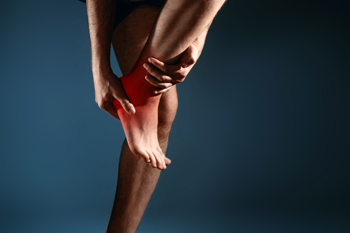
There are many people who enjoy running that experience foot pain. Running causes the feet to endure repetitive stress as a result of the constant pounding on different types of surfaces. Research has indicated the most common types of foot pain caused by running injuries fall into four categories: plantar fasciitis, stress fractures, extensor tendonitis, and adductor and abductor hallucis. The plantar fascia is a band of tissue that runs along the sole of the foot. The majority of runners are familiar with pain that can come from an inflamed plantar fascia, known as plantar fasciitis. When this occurs, the heel pain this ailment brings can make running become difficult to pursue. A stress fracture can develop gradually, and may come from not warming up and cooling down properly. It is defined as a hairline fracture in one of the several bones in the feet, and rest is often needed for healing. Extensor tendonitis involves the tendons in the toes, and wearing shoes that do not fit correctly may cause these tendons to become inflamed. Adductor and abductor hallucis is a condition that affects the arch, and can occur from having inadequate arch support in the shoes. If you have foot pain of any kind, please consult with a podiatrist who can effectively diagnose problems and provide treatment.
Foot Pain
Foot pain can be extremely painful and debilitating. If you have a foot pain, consult with Dr. Thong V. Truong from California. Our doctor will assess your condition and provide you with quality foot and ankle treatment.
Causes
Foot pain is a very broad condition that could be caused by one or more ailments. The most common include:
- Bunions
- Hammertoes
- Plantar Fasciitis
- Bone Spurs
- Corns
- Tarsal Tunnel Syndrome
- Ingrown Toenails
- Arthritis (such as Gout, Rheumatoid, and Osteoarthritis)
- Flat Feet
- Injury (from stress fractures, broken toe, foot, ankle, Achilles tendon ruptures, and sprains)
- And more
Diagnosis
To figure out the cause of foot pain, podiatrists utilize several different methods. This can range from simple visual inspections and sensation tests to X-rays and MRI scans. Prior medical history, family medical history, and any recent physical traumatic events will all be taken into consideration for a proper diagnosis.
Treatment
Treatment depends upon the cause of the foot pain. Whether it is resting, staying off the foot, or having surgery; podiatrists have a number of treatment options available for foot pain.
If you have any questions, please feel free to contact our office located in Chico, CA . We offer the newest diagnostic and treatment technologies for all your foot care needs.
Certain Sporting Activities May Trigger Sesamoiditis
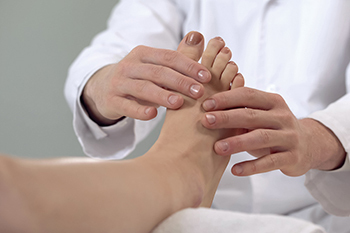
There are specific bones in the body that are unique because they do not use joints to connect to the other bones. These bones are referred to as sesamoid bones, and tendons are used to connect these bones to other bones in the body. Additionally, they can be found inside muscles. The sesamoid bones help to support the body, and sesamoiditis can happen when the adjoining tendons become inflamed and irritated. It is a common injury among ballet dancers, and this is a result of the style of dancing they pursue. Sesamoiditis may also affect baseball catchers and runners, and this can be a result of the pressure that is placed on the feet. People who are afflicted with this condition may find it difficult to straighten or bend the big toe, and it may be accompanied by swelling and pain on the sole. Treatment often starts with stopping the activity that caused the condition, and it can be beneficial to wear shoes that fit correctly. If you feel you may have sesamoiditis, it is urgent that you contact a podiatrist who can help you to manage this ailment.
Sesamoiditis is an unpleasant foot condition characterized by pain in the balls of the feet. If you think you’re struggling with sesamoiditis, contact Dr. Thong V. Truong of California. Our doctor will treat your condition thoroughly and effectively.
Sesamoiditis
Sesamoiditis is a condition of the foot that affects the ball of the foot. It is more common in younger people than it is in older people. It can also occur with people who have begun a new exercise program, since their bodies are adjusting to the new physical regimen. Pain may also be caused by the inflammation of tendons surrounding the bones. It is important to seek treatment in its early stages because if you ignore the pain, this condition can lead to more serious problems such as severe irritation and bone fractures.
Causes of Sesamoiditis
- Sudden increase in activity
- Increase in physically strenuous movement without a proper warm up or build up
- Foot structure: those who have smaller, bonier feet or those with a high arch may be more susceptible
Treatment for sesamoiditis is non-invasive and simple. Doctors may recommend a strict rest period where the patient forgoes most physical activity. This will help give the patient time to heal their feet through limited activity. For serious cases, it is best to speak with your doctor to determine a treatment option that will help your specific needs.
If you have any questions please feel free to contact our office located in Chico, CA . We offer the newest diagnostic and treatment technologies for all your foot and ankle needs.
What to Consider for a Proper Shoe Fitting
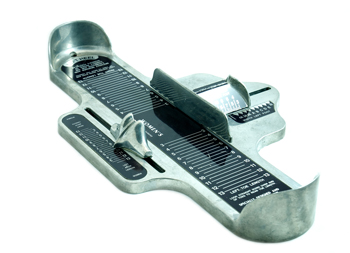
Many people believe when their foot fits into a sneaker or shoe, it is a perfect match. This may not necessarily be true because there are many factors to consider in shoe size. These can include finding the right shoe length in addition to the proper width and volume. It is suggested to have a thumbnail space between the end of the longest toe and the top of the shoe. This can be checked by standing in the shoes with the foot as far back as possible and this often provides an accurate measurement. The space in the top of the shoe can allow room for the feet as they swell during the day. The width of the shoe is just as important and when this is perfect, the foot will fit snugly across the middle of the shoe. The volume of the shoe indicates the foot sliding into the shoe easily and there is no pressure felt on top of the foot. If you would like more information about how to fit shoes properly, please contact a podiatrist who can help you with any questions you may have.
Finding a properly-fitting shoe is important in reducing injuries and preventing foot problems. For more information about treatment, contact Dr. Thong V. Truong from California. Our doctor will treat your foot and ankle needs.
Proper Shoe Fitting
A common concern when it comes to foot health, having properly fitted shoes can help prevent injuries to the foot. Out feet affect our posture and gait, which in turn affects the biomechanics and overall bodily structure. With 33 joints, 26 bones, and over 100 ligaments, the potential for serious injury is much greater than one realizes. Although the feet cease growth in adulthood, they still change shape as they mature. Here are some factors to consider when it comes to investing in proper fitting shoes:
- Be sure the shoes fit correctly right away
- Ensure the ball of your foot fits comfortably in the widest portion of the shoes
- Even though they may look fashionable, improper fitting shoes can either create adverse conditions or exacerbate existing ones you may already have
- Walk along a carpeted surface to ensure the shoes comfortably fit during normal activity
Keeping in mind how shoes fit the biomechanics of your body, properly-fitting shoes are vitally important. Fortunately, it is not difficult to acquire footwear that fits correctly. Be sure to wear shoes that support the overall structure of your body. Do your feet a favor and invest in several pairs of well-fitted shoes today.
If you have any questions please feel free to contact our office located in Chico, CA . We offer the newest diagnostic and treatment technologies for all your foot and ankle needs.
How to Get a Proper Shoe Fit
Many people suffer from foot problems because their shoes are poorly fitted. When shopping for a new pair of shoes, fashion usually triumphs over comfortability. A pair of well fitted shoes is essential in preventing foot problems and potential injuries.
Poorly fitted shoes can cause foot issues such as plantar fasciitis, bunions, hammertoes, ingrown toenails, and foot pain. Shoes such as high heels and sandals may cause problems for your feet. These shoes put the foot in an unnatural position for long periods and fail to provide good foot support. It is recommended to not wear either one for an extended period.
When you are trying on shoes, make sure they have enough space for your toes to move around. Shoes shouldn’t be cramped but also shouldn’t have too much room that your foot moves around in them. A snug shoe is a good choice. They should also provide good arch support and cushioning. Athletic shoes tend to offer both good support and cushioning. A degree of flexibility is necessary so they aren’t too stiff or too unsupportive.
If you can wear your shoes for a long period of time without experiencing any discomfort, this is a sign that your shoes fit properly. Do not be too dismayed if the shoe isn’t a perfect fit at first; many shoes take a few days to weeks to properly break in. However don’t expect an uncomfortable shoe to become fitted to your foot.
For those with foot conditions such as flat feet or pronation, orthotics may be helpful or even necessary to prevent foot pain. Orthotics are inserts that are placed in the shoe and provide support and cushioning for the foot. While there are many types of orthotics out there, custom-made orthotics may be necessary depending upon your foot and foot conditions.
Feet change in size over time. It is important to check your foot size over time so that you can make sure you have the perfect fit for your feet. A podiatrist can provide more information on proper shoe fitting and foot orthotics.
